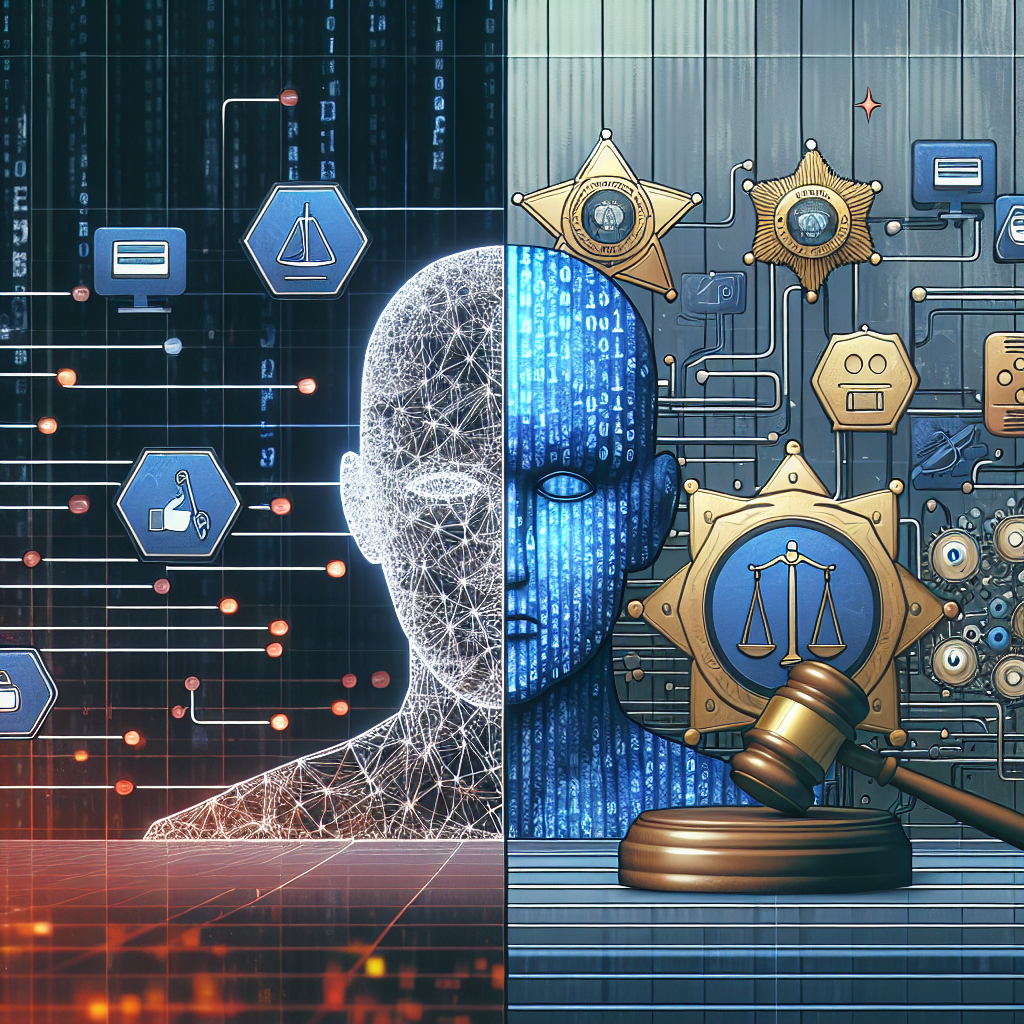The Risks of AI in Law Enforcement: Potential Challenges and Concerns
Artificial Intelligence (AI) has become an increasingly prominent tool in law enforcement agencies around the world. From predictive policing to facial recognition technology, AI has the potential to revolutionize the way that law enforcement operates. However, along with the benefits of AI come a number of potential challenges and concerns that must be addressed in order to ensure that its implementation is both effective and ethical.
One of the main risks of AI in law enforcement is the potential for bias and discrimination. AI algorithms are only as good as the data that is used to train them, and if that data is biased or flawed in any way, the AI system will inevitably produce biased results. For example, if a predictive policing algorithm is trained on historical crime data that disproportionately targets minority communities, the algorithm will likely continue to target those communities in the future, perpetuating existing biases within the criminal justice system.
Another concern with AI in law enforcement is the lack of transparency and accountability. AI systems are often complex and opaque, making it difficult for outside observers to understand how they work or why they produce certain results. This lack of transparency can lead to a lack of accountability, as it is difficult to hold AI systems responsible for their actions if no one understands how they make decisions.
Additionally, there are concerns about the potential for AI to infringe on civil liberties and privacy rights. For example, facial recognition technology has the potential to track individuals’ movements and activities in public spaces without their knowledge or consent, raising serious concerns about mass surveillance and the erosion of privacy rights.
There are also concerns about the potential for AI to be used as a tool for social control and repression. In authoritarian regimes, AI systems could be used to monitor and suppress dissent, identify and target political opponents, and enforce oppressive laws and regulations. Even in democratic societies, there is a risk that AI systems could be used to target and intimidate marginalized or vulnerable populations, exacerbating existing inequalities and injustices within the criminal justice system.
In order to address these risks and concerns, it is essential that law enforcement agencies take steps to ensure that AI systems are developed and deployed in a responsible and ethical manner. This includes conducting thorough audits and assessments of AI systems to identify and mitigate bias, ensuring transparency and accountability in the development and use of AI systems, and establishing clear policies and guidelines for the ethical use of AI in law enforcement.
Frequently Asked Questions (FAQs)
Q: What is predictive policing and how does AI play a role in it?
A: Predictive policing is a law enforcement strategy that uses data analysis and AI algorithms to identify areas where crimes are likely to occur in the future. AI plays a role in predictive policing by analyzing historical crime data and other relevant information to identify patterns and trends that can help law enforcement agencies allocate resources more effectively.
Q: What are some examples of bias in AI systems used in law enforcement?
A: One example of bias in AI systems used in law enforcement is the use of predictive policing algorithms that target minority communities based on historical crime data. Another example is the use of facial recognition technology that is less accurate when identifying individuals with darker skin tones, leading to higher error rates for people of color.
Q: How can law enforcement agencies ensure that AI systems are developed and deployed ethically?
A: Law enforcement agencies can ensure that AI systems are developed and deployed ethically by conducting thorough audits and assessments of AI systems to identify and mitigate bias, ensuring transparency and accountability in the development and use of AI systems, and establishing clear policies and guidelines for the ethical use of AI in law enforcement.
Q: What are some potential benefits of AI in law enforcement?
A: Some potential benefits of AI in law enforcement include improved crime detection and prevention, more efficient resource allocation, and enhanced officer safety. AI systems can help law enforcement agencies analyze large amounts of data more quickly and accurately, enabling them to identify and respond to threats more effectively.
In conclusion, while AI has the potential to revolutionize law enforcement and improve public safety, it also comes with a number of risks and challenges that must be addressed. By taking steps to ensure that AI systems are developed and deployed in a responsible and ethical manner, law enforcement agencies can harness the power of AI while minimizing the potential harms and risks associated with its use.

